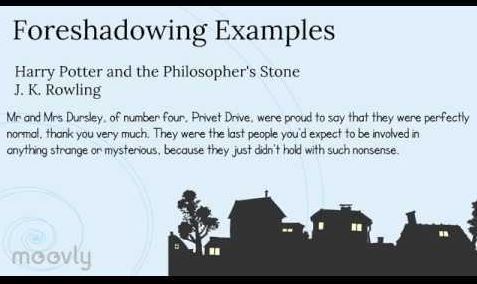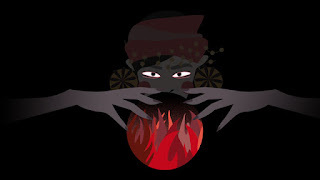The Power of Foreshadowing
ThePower of Foreshadowing:
CreatingTension & Drama in Your Writing
Are you tired of writing stories that lackexcitement and leave your readers bored? Do you want to create tension anddrama in your writing, but don't know how? Look no further than the power offoreshadowing. This literary technique can take your storytelling skills to thenext level by hinting at what's to come, intriguing your readers, and buildinganticipation for the climax. In this blog post, we'll explore why foreshadowingis essential for creating unforgettable stories and provide tips on how to useit effectively in your writing. Get ready to captivate your audience with theart of foreshadowing!
 What is Foreshadowing?
What is Foreshadowing?Foreshadowing is a literary technique that is usedto hint at future events in a story. It can be used to create suspense,tension, and drama in your writing. By carefully planting clues throughout yourstory, you can keep your readers guessing about what is going to happen next.
Foreshadowing can be done in a number of ways. Youcan use dialogue, description, or action to hint at future events. For example,if a character says, "I'm never going back to that place," this couldbe foreshadowing that something bad is going to happen to them at the location.Or, if a character has a vision of the future, this could be foreshadowing whatis going to happen in the story.
You can also use foreshadowing to revealinformation about the characters or the plot. For example, if a character isconstantly looking over their shoulder, this could be foreshadowing that theyare being followed by someone. Or, if a character keeps having dreams about anevent, this could be foreshadowing that the event is going to happen.
By carefully using foreshadowing in your story,you can create suspense, tension, and drama for your readers.
Benefits of Foreshadowing
Foreshadowing is a literary device that can beused to create tension and drama in your writing. By hinting at future events,you can keep readers on the edge of their seats, wondering what will happennext. Foreshadowing can also be used to build suspense, making readers eager tofind out what happens next.
Examples of Foreshadowing in Popular Fiction
One of the most effective ways to create tensionand drama in your writing is to use foreshadowing. Foreshadowing is a literarydevice in which a writer gives hints or clues about what is going to happenlater in the story.
There are many different ways to useforeshadowing, but one of the most common is to hint at future events throughthe use of symbols. For example, in J.K. Rowling's Harry Potter series, theDark Mark is a symbol that foreshadows Lord Voldemort's return.

Another common way to use foreshadowing is throughdialogue. In the movie The Sixth Sense, for example, there is a scene in whichCole says to his mother, "I see dead people." This line of dialogueforeshadows the big twist at the end of the movie: that Cole can see ghosts.
You can also use foreshadowing by havingcharacters make predictions about the future. In George R.R. Martin's A Game ofThrones, for instance, Cersei Lannister tells her young son that he will be"the greatest king who ever ruled." This prediction not onlyforeshadows her son's eventual ascension to the Iron Throne, but also sets upthe conflict between him and his brother Tyrion (who also has a claim to thethrone).
Finally, you can use flashbacks as a form offoreshadowing. This is often done in horror movies, such as The Ring
How to Use Foreshadowing in Your Writing
Foreshadowing is a powerful tool that can addtension and drama to your writing. When used correctly, foreshadowing can keepreaders on the edge of their seats, eager to see what happens next.
There are a few things to keep in mind when usingforeshadowing in your writing:
1. Use it sparingly. If you over-useforeshadowing, it will lose its impact.
2. Make sure there is a payoff. Don't teasereaders with potential events that never come to fruition.
3. Be subtle. The best foreshadowing isoften subtle, and subtlety is key when trying not to give too much away toosoon.
4. Use it to create suspense, not justdrama. Foreshadowing can be used to hint at future events without giving awaytoo much information about those events. This can create a sense of suspensethat will keep readers engaged.
Tips for Creating Tension and Drama with Foreshadowing
Foreshadowing is a powerful tool that writers canuse to create tension and drama in their stories. When used effectively,foreshadowing can make a reader feel like they are on the edge of their seat,eagerly waiting to see what will happen next.
There are a few things to keep in mind when usingforeshadowing in your writing:
1. Make sure that the events you areforeshadowing are actually relevant to the story. Otherwise, it will just feellike a cheap gimmick.
2. Try to be subtle with yourforeshadowing. If you're too heavy-handed, it will be obvious and take awayfrom the suspense.
3. Use foreshadowing sparingly. If youoverdo it, it will lose its impact and become annoying.
4. Be careful not to give too much away.You want to leave enough unanswered questions so that readers will be motivatedto keep reading.
By following these tips, you can use foreshadowingto add tension and drama to your writing and keep your readers hooked until thevery end!
 Alternatives to Foreshadowing
Alternatives to ForeshadowingIf you're looking to create tension and drama inyour writing, foreshadowing is a powerful tool. But it's not the only way toachieve these effects. Here are some alternatives to foreshadowing that canalso help you up the ante in your story:
1. Create a sense of unease from theoutset.
One way to immediate create a sense of tension isto start your story with an unsettling scene or event. This could be somethingas small as a character waking up from a bad dream, or something more dramaticlike a murder taking place. Either way, this opening will set the tone for therest of the story and let readers know that they're in for an suspenseful ride.
2. Gradually ramp up the stakes.
If you want to keep readers on their toes,gradually increasing the stakes is key. Each new development in the storyshould make things more and more intense, until everything comes to a head inan explosive climax. By upping the ante little by little, you'll keep readershooked and anxious to see how everything plays out.
3. Use red herrings.
A red herring is any false clue or piece ofinformation that leads readers astray from the true nature of events unfoldingin the story. Throwing in a few well-placed red herrings can add an extra layerof mystery and confusion, keeping readers guessing right up until the very end.
Conclusion
Foreshadowing can be a powerful tool for buildingtension and creating drama in your writing. By hinting at upcoming events insubtle ways, you can keep readers on the edge of their seats and make them moreinvested in your story. Even if you are not an experienced writer, with a bitof practice, you will soon master the art of foreshadowing to add depth to yourstories for maximum impact.



